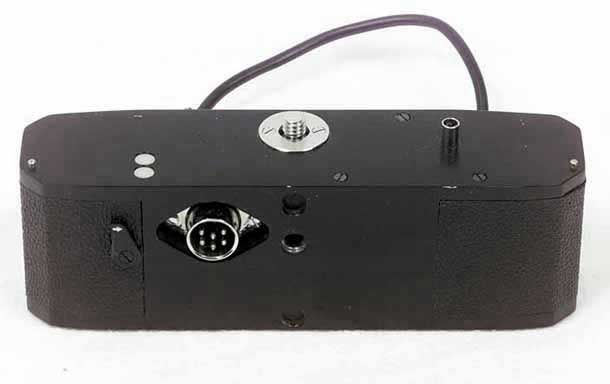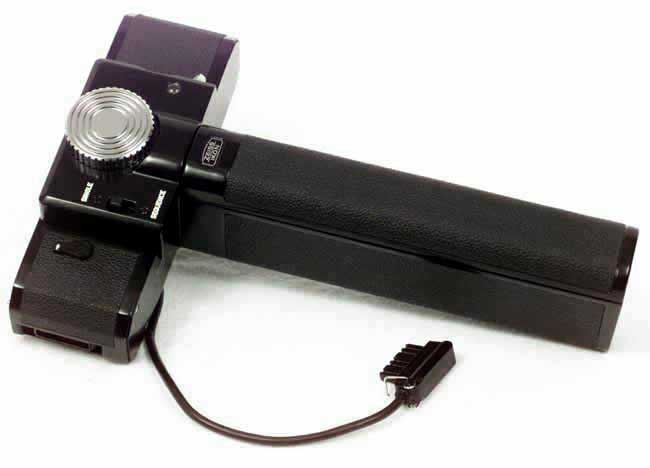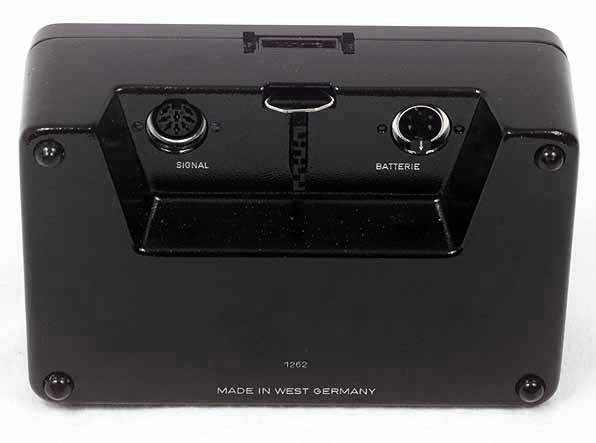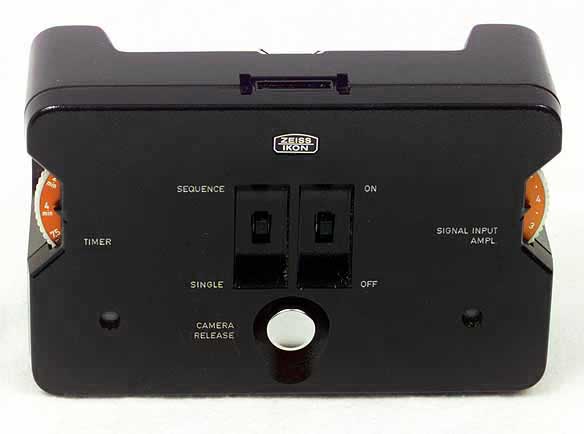
Photographica Pages
An online guide to collectable cameras and related stuff
Zeiss Ikon Contarex Super Electronic
The Contarex Super Electronic (marked only "Electronic" on the front) is often thought of being the
successor to the Contarex Super. However the Super and the Electronic were started at the same time.
Zeiss rushed the Super to the market first while the Electronic was still in the design stage. And both
cameras remained in production until Zeiss Ikon ceased camera manufacture in 1975.
Where the Super was a refinement of a proven design, the Electronic was a cutting edge design.
Based on the chassis and layout of the Super, it featured the world's first electronically governed
shutter. Generally cutting edge designs have flaws in their initial designs, and the Electronic was no
exception. The flaw was in the power for the meter and shutter were both drawn off the same battery.
This was rectified in a running design change with no fanfare or change in model designation. Later
cameras have two battery compartments, the second under the mirror.
The electronic shutter not only allowed for greater accuracy, it allowed for the shutter timing function to
be controlled externally by the Tele-sensor, an accessory meter cell which turned the camera into an
aperture priority auto exposure camera. Shutter speeds ranged steplessly from 1/1000th up to 8
seconds. An accessory shutter speed indicator plugged into the side of the Tele-sensor, displaying the
speed selected.
The Tele-sensor was not intended for handheld use, but rather for remote or unattended photography,
although it often was. The Electronic also featured an electric motor drive, the only production camera
Zeiss ever offered one on. The motor ran at 2 FPS, and could be powered by a battery handgrip, or
by the Electronic Remote Timer, which was a remote release, an intervalometer and a bridge to other
remote releases such as radio, infrared, etc. To make the offering complete, Zeiss offered a 450-
exposure bulk film back.
The Electronic was introduced in 1968, and only 3100 were produced. The camera was available in
chrome and black finishes. The first style was produced from September 1968 until March 1970, with
serial numbers running G36001 to G37500. The improved version with two power sources ran from
serial number R55001 through R57000. Cameras after R55900 have a coated mirror.
The final batch of cameras manufactured carry the Carl Zeiss logo, rather than Zeiss Ikon. It was
projected that 500 would be assembled, but reportedly only 100 were built. The serial numbers for
these cameras were R64501 through R6500. The serial numbers allocated don't match the production
figures. Probably not all numbers were used, and/or some completed units did not leave the factory,
and were therefore not added to the total production figures.


Front and back views of the electric motor without the grip.
 Motor with grip attached.
Motor with grip attached.


Front and back views of the Electronic Remote Timer

The Telesensor.

Shutter Speed Indicator.


Front and back views of the electric motor without the grip.
 Motor with grip attached.
Motor with grip attached.


Front and back views of the Electronic Remote Timer

The Telesensor.

Shutter Speed Indicator.
